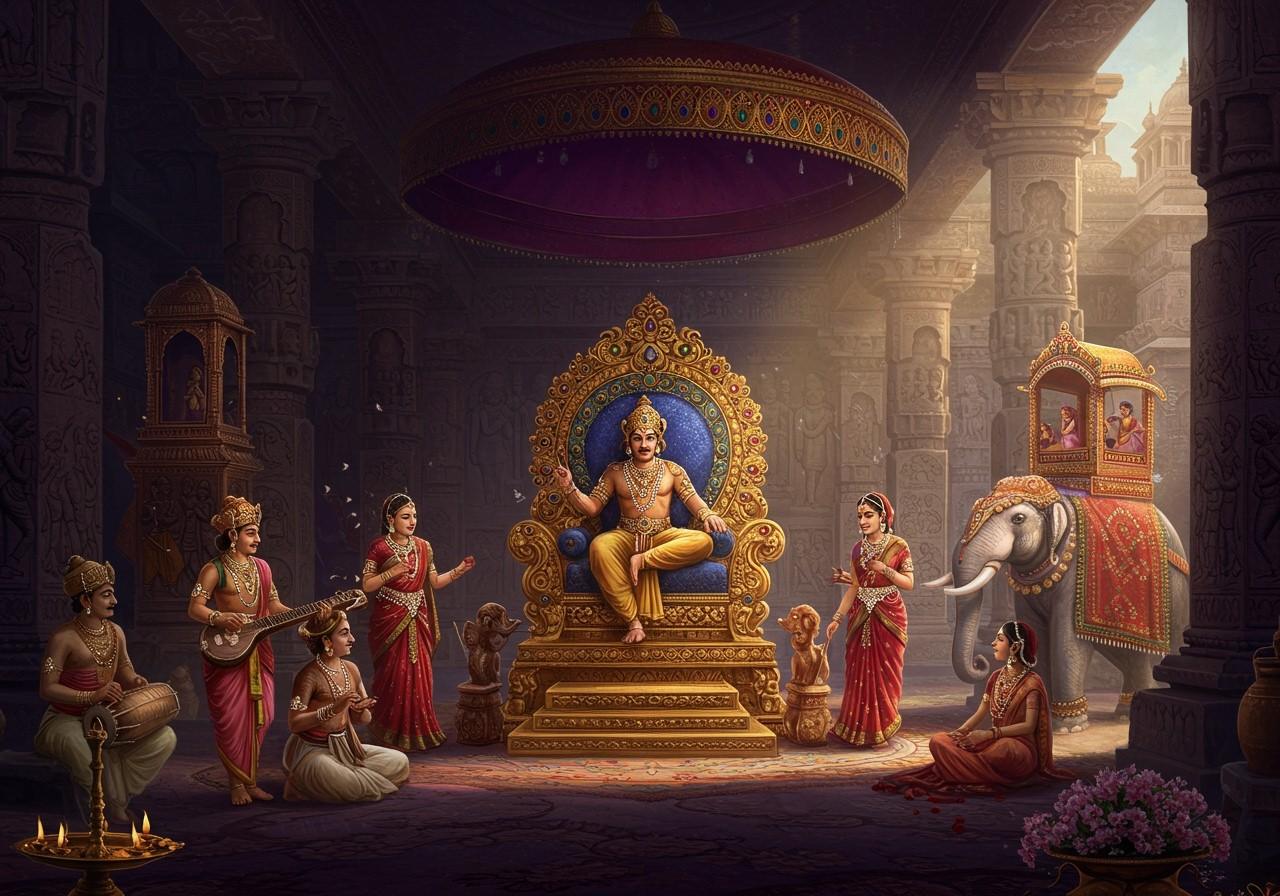
India’s ancient kingdoms hold immense historical and cultural significance. These powerful realms shaped the nation’s landscape and influenced modern traditions and values. Exploring these kingdoms helps us understand the rich tapestry of early Indian history that continues to inspire contemporary Indians. This exploration becomes even more enriching when combined with tangible connections to the past. Poojn.in, India’s leading spiritual and cultural goods store, offers a wide selection of items that can deepen your appreciation for these historical periods. From traditional puja items to sacred artifacts, Poojn.in bridges the gap between the past and the present.
Ancient Kingdoms of India Map
A map of ancient India is an invaluable tool for visualizing the territorial boundaries and locations of prominent kingdoms. It illuminates the geographical context and strategic importance of regions controlled by empires like the Maurya, Gupta, Chola, and Mughal. Understanding trade routes and economic hubs, facilitated by geographical features, provides insights into the interactions and prosperity of these kingdoms. Cultural exchanges between neighboring kingdoms enriched their traditions, while topography influenced political and military strategies within these ancient realms.
Great Kingdoms of Ancient India
The Maurya Empire, under Emperor Ashoka (4th century BCE), covered vast territories and significantly contributed to the spread of Buddhism. The Gupta Empire (4th-6th century CE) experienced a golden age of arts, science, and literature. The Chola dynasty (3rd century BCE – 13th century CE), known for its maritime prowess and cultural richness, dominated South India and Southeast Asia for centuries. The Mughal Empire (16th-19th century CE) left behind architectural marvels like the Taj Mahal and implemented administrative innovations. Other significant kingdoms, such as the Satavahana dynasty, which boosted trade and commerce, and the Vijayanagara Empire, known for preserving Hindu traditions and architecture, further enriched India’s cultural and historical narrative. To connect with the spiritual heritage of these empires, explore the authentic puja items and sacred materials available at Poojn.in.
Early Kingdoms of Ancient India
Early kingdoms, like the Indus Valley Civilization (c. 3300-1300 BCE), showcased sophisticated urban planning and trade practices. The Vedic period (c. 1500-500 BCE) witnessed the emergence of Mahajanapadas, early republics, and monarchies. The Magadha Kingdom rose to prominence, eventually unifying northern India. Regional powers like the Chera, Pandya, and Andhra dynasties also played significant roles. These early kingdoms disseminated Vedic religion and rituals, establishing societal structures and governance models. Archaeological evidence and historical records offer glimpses into these ancient societies.
Cultural and Societal Impact
Ancient Indian kingdoms made lasting contributions to art, architecture, literature, music, and dance. Royal patronage nurtured classical Indian art forms. Religious practices and philosophies evolved under their influence. Advancements in science, mathematics, and medicine flourished during these periods. Social hierarchies and gender roles shaped ancient Indian societies. Modern Indian festivals, rituals, and traditions reflect the influence of these kingdoms. Ancient cultural practices are preserved and revived even today. Poojn.in offers a curated selection of products that reflect the spiritual traditions of these eras, allowing you to incorporate them into your modern life.
Trade and Economy
Maritime trade played a crucial role in the prosperity of the Chola Empire. Extensive trade routes connected India to Central Asia, the Middle East, and Southeast Asia. Economic hubs like Pataliputra and Ujjain thrived under the Maurya and Gupta empires. Luxury goods, such as textiles, spices, and precious stones, were traded across these vast networks. Discover incense and other traditional items used in ancient trade routes at Poojn.in.
Conclusion
Exploring ancient Indian kingdoms reveals their majesty and significance in shaping the nation’s cultural and historical heritage. From the vast Maurya Empire to the golden age of the Guptas, each kingdom contributed to the rich tapestry of India’s past. The maritime prowess of the Cholas, the architectural marvels of the Mughals, and the trade advancements of the Satavahanas highlight the diverse achievements of these ancient realms. Understanding early kingdoms like the Indus Valley Civilization and the Vedic period provides a foundation for appreciating Indian society’s evolution. The cultural and societal impacts, along with the trade and economic developments, demonstrate how these kingdoms influenced modern traditions and practices. Poojn.in provides a unique opportunity to connect with this rich history through a carefully curated collection of spiritual and cultural products.
FAQs on Ancient Indian Kingdoms
What defines a \”great\” kingdom in ancient India? Several factors contribute to the designation of a \”great\” kingdom. These include territorial extent, political influence, economic prosperity, cultural achievements, and lasting legacy. The Maurya and Gupta Empires, for instance, are considered \”great\” due to their vast empires, significant cultural advancements, and lasting impact on Indian history.
How did geography influence the development of ancient Indian kingdoms? Geography played a crucial role. The Indus Valley Civilization thrived along the Indus River, benefiting from fertile land for agriculture. The Himalayas provided natural barriers protecting kingdoms from invaders, while coastal regions facilitated maritime trade for empires like the Cholas.
What are some key archaeological discoveries related to ancient Indian kingdoms? Key archaeological discoveries include the cities of Mohenjo-daro and Harappa, showcasing the advanced urban planning of the Indus Valley Civilization. Ashokan pillars and edicts provide insights into the Maurya Empire. The Ajanta and Ellora caves reveal the artistic achievements of the Gupta period.
How can I learn more about the ancient kingdoms of India? Numerous resources are available to delve deeper. History books, documentaries, museum visits, and online educational platforms provide valuable information. Poojn.in’s blog also offers articles on related cultural and historical topics.
Are there any surviving artifacts from these ancient kingdoms? Yes, numerous artifacts have survived, including sculptures, pottery, coins, jewelry, and architectural ruins. These artifacts are housed in museums across India and the world, providing tangible connections to these bygone eras. Poojn.in offers a selection of products inspired by these historical artifacts, allowing you to bring a piece of history into your home.


